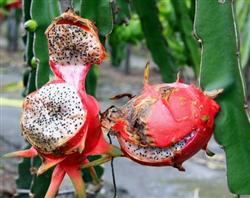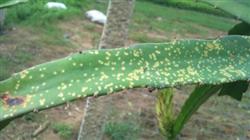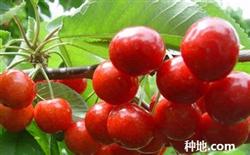How to manage the planting of dragon fruit

Fire dragon fruit is a kind of green environmental protection fruit in the concept of consumption and a health and nutritious food with certain curative effect. In recent years, the production of dragon fruit in our city has developed very rapidly. by the end of 2007, the development area of dragon fruit in the city has reached 4500 mu. It can be predicted that the dragon fruit industry will be a modern agricultural project with new type, comprehensive utilization, long market advantage and sustainable development. The cultivation techniques of dragon fruit are introduced as follows: first, variety selection. Select the seedlings with pure variety (preferably red skin and red meat type), thick stem and flesh, full stem segment, complete root system, developed root system, no disease and insect pests, and seedling height above 40cm. When selecting red-skinned and red-fleshed dragon fruit varieties, certain red-skinned and white-fleshy pollinated varieties should be allocated, and the ratio of pollinated varieties to main varieties is 1 ∶ 8. Second, planting specifications and seasons. Before seedling cultivation, 110 cement square columns of 10 × 10 × 200 cm per mu with a row spacing of 2 meters × 3 meters per mu were erected, and the cement columns were put into the soil 50 cm to support the climbing of dragon fruit branches, and a cement ring with a diameter of 50 cm and 60 cm was placed on the cement column to support the branches. The planting holes of 10 cm deep and 20 cm long and 20 cm wide were dug on each side of the cement column, in which rotten organic fertilizer and soil were mixed evenly, and 4 plants were planted next to each cement column. The dragon fruit can be planted all the year round, and it is better to grow and recover as soon as possible, generally from March to November, with a depth of 3 to 5 centimeters. According to the calculation of 4 seedlings planted next to each column, 440 seedlings can be planted per mu. At the initial stage of planting, the soil should be kept moist and drained in time in rainy weather, so as not to cause stem and flesh rot caused by germs. Third, field cultivation management. The dragon fruit can blossom and bear fruit after 16 months, and it can spend 10-12 batches every year, and the fruit-bearing period is from June to November. It entered the full fruit period in the third year after planting, and the yield per mu with higher management level could reach more than 2000 kg. Field cultivation management is divided into the following points: 1. Water and fertilizer management. The soil should be kept moist at the initial stage of dragon fruit planting, otherwise it is not conducive to growth. The root distribution of dragon fruit is shallow, and fertilization should be applied for a few times to prevent root burning and rotting. After the planting seedlings germinated, they were fertilized 5-6 times a year, mainly nitrogen fertilizer, specifically: rarefied human fecal urine was applied in a planting hole about 10 cm away from the seedling, about 1 kg per plant, and then human fecal urine with 0.3% urea and 0.1% potassium chloride was added to each germination until the dragon fruit blossomed. In addition, a mature organic fertilizer is applied once in winter, about 10 kg per plant to enhance the heat preservation and cold resistance of the plant. After flowering and fruiting, fertilizer was applied three times a year, that is, pre-flowering fertilizer in April, strong fruit fertilizer in August and overwintering fertilizer in December, mainly mature organic fertilizer and ternary compound fertilizer. In addition, potash fertilizer and magnesium fertilizer should be applied during flowering and fruiting period to promote sugar accumulation and improve fruit quality. 2. Prune the branches. The branch climbs to the top of the cement column to maintain single branch growth. When it reaches the top of the column (1.3-1.4 m), it should be coring, promote branching, and let the branch droop naturally, accumulate nutrients, and blossom and bear fruit early. The branches that have more fruit are less likely to form flowers again next year, and the large and strong branches at the base of the branches are left through thinning to ensure the fruiting yield in the coming year. 3. Intercropping and artificial pollination. When planting red meat type dragon fruit, it is necessary to plant about 10% of white meat type dragon fruit. Mutual pollination among varieties can significantly improve the seed setting rate. Artificial pollination should be carried out in cloudy and rainy weather. Before the flowers bloom in the evening or before the flowers are closed in the morning, the pollen can be directly applied to the female flower stigma with a writing brush to increase the fruit setting rate. 4. Thinning flowers and fruits. The dragon fruit has a long flowering period and strong flowering ability, and it will blossom from May to October. After pollination and fertilization is normal, the withered flowers can be cut off by ring carving (retain the sepals below the stigma and ovary). Fruit thinning begins when the transverse diameter of the young fruit reaches about 2 cm. Each branch leaves a young fruit with full development, bright green color, no damage and deformity, and a certain growth space, and the rest are thinned to concentrate nutrients and promote fruit growth. 5. Fruit bagging. The peel should be bagged with waste newspapers or Kraft paper bags before changing color, so as to keep the pericarp evenly colored and prevent the bites of birds and wasps, as well as wind scraping and sun exposure, so as to improve commodity value. 6. Pest control. Pitaya basically has no special pests, occasionally there are nematodes in roots, red spiders in stems and leaves, timely prevention and control; young seedlings are vulnerable to snail harm, can be controlled with snails and other insecticides; high temperature and humidity season is easy to infect diseases, there are branches and plants tissue necrosis and mildew spots, therefore, in the rainy weather should be timely drainage, lest infection bacteria cause stem and meat rot, the use of germicidal pesticides can achieve good results. 7. Timely harvest. The dragon fruit can be harvested about 45 days after flowering. Harvesting too late will not only cause fruit cracking, but also cause the local color of the pericarp to blacken, affecting the commodity value. Fruits that need to be stored for a long time or transported over a long distance should be harvested before softening and darkening. Click to see more dragon fruit planting techniques
- Prev

What are the main pests of dragon fruit
Pine trees have been planted in orchards before, and termites may be more serious. Termites will directly gnaw off the stem of the dragon fruit plant or nibble away at the root group, causing the injured tissue to yellowing and fester upward. The control of termites can be killed by drugs in the roots. Underground pests include snails, slugs, ants and so on. They eat the tender branches of plants. But in.
- Next

Is there a soil testing formula for fertilization in cherry trees?
How to fertilize cherries for high yield? To guide the cherry tree fruit growth period is short, with the characteristics of rapid and concentrated need of fertilizer. Fertilization should be based on tree age, tree potential, soil fertility and fertilizer demand characteristics of varieties, timely and appropriately supply all kinds of nutrient elements for cherry growth and development, so as to achieve the goal of strong tree, high quality and high yield. ...
Related
- Moge, come on! The staff of the peasant association in the producing area of cantaloupe were frightened when the crowd gathered.
- Causes and Solutions of low Fruit setting rate of Apple
- Symptoms and control measures of passion fruit virus disease
- Fruit growing lesson: how do apple orchards keep high yields?
- Can you build orchards in the mountains? What are the pros and cons?
- How to manage the coloring period of Crisson grape?
- This paper introduces the processing technology of two kinds of fig products.
- How much is a month for retired teachers in rural areas by 2020?
- How can strawberry planting increase sugar content? We should pay attention to management in many aspects.
- What are the cultivation techniques on how to improve the yield of golden fruit?

